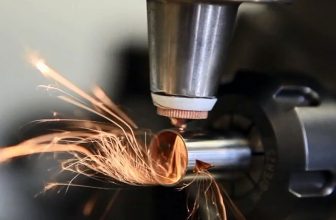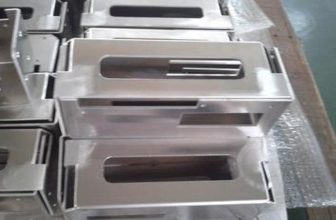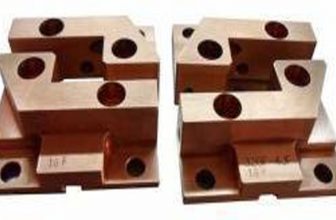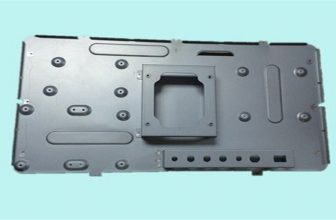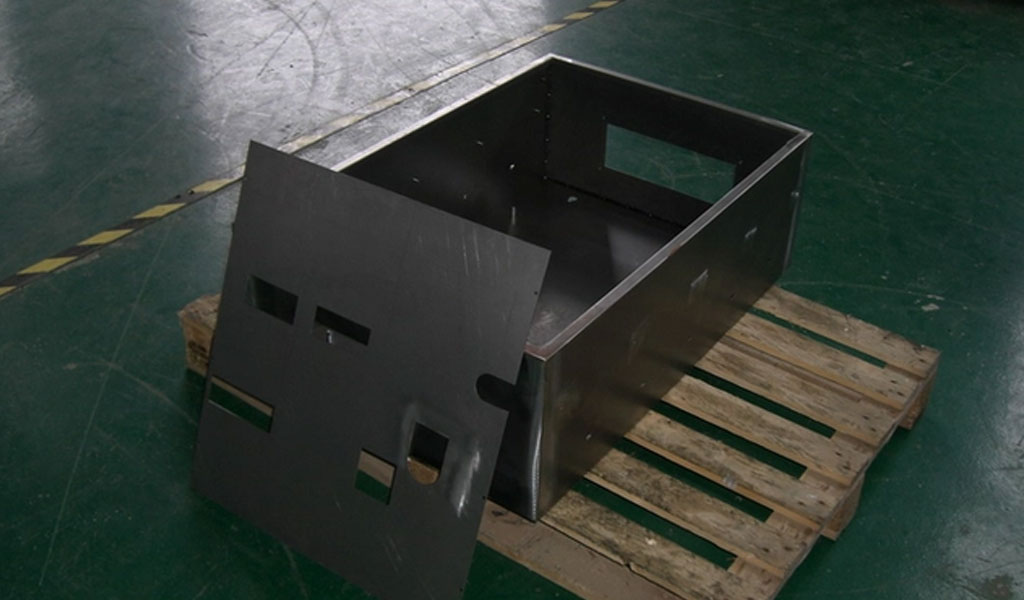
1.Micro-arc Oxidation
Micro-arc oxidation, also known as micro-plasma oxidation, is through the combination of electrolyte and corresponding electrical parameters, on the surface of aluminum, magnesium, titanium and their alloys, relying on the instantaneous high temperature and high pressure generated by arc discharge, the matrix metal oxide is grown. ceramic membrane layer.
2.Metal Wire Drawing
Metal wire drawing is a surface treatment method that forms lines on the surface of the workpiece by grinding products to achieve a decorative effect.
3.Burn Blue
Burning blue is to fill the whole carcass with colored glaze, and then bake it in a blast furnace with a furnace temperature of about 800°C. The colored glaze is melted from a sandy solid into a liquid, and after cooling, it becomes a gorgeous color fixed on the carcass. Glaze, at this time, the color glaze is lower than the height of the copper wire, so it has to be filled with color glaze again, and then sintered, usually four or five times in a row, until the pattern is filled to the same level as the filigree pattern.
4.Shot Peening
Shot peening is a cold working process that bombards the surface of the workpiece with pellets and implants residual compressive stress to improve the fatigue strength of the workpiece.
5.Sandblasting
Sand blasting is the process of cleaning and roughening the surface of the substrate by the impact of high-speed sand flow, that is, using compressed air as the power to form a high-speed jet beam to spray the spray material (copper ore, quartz sand, corundum, iron sand, Hainan sand) at high speed To the surface of the workpiece that needs to be treated, the appearance or shape of the outer surface of the workpiece surface is changed.
6.Etching
Metal Etching is the technique of removing material using chemical reaction or physical impact. Usually refers to etching, also known as photochemical etching, which refers to removing the protective film of the area to be etched after exposure plate making and development, and contacting chemical solution during etching to achieve the effect of dissolution and corrosion, forming the effect of concave-convex or hollow molding.
7.IMD
IMD is In-Mold Decoration (in-mold decoration technology), also known as coating-free technology. It is an internationally popular surface decoration technology. The surface is hardened and transparent film, the middle printing pattern layer, the back injection molding layer, and the middle of the ink can make the product resistant to friction. , prevent the surface from being scratched, and can keep the color bright and not easy to fade for a long time.
8.OMD
OMD Out Mold Decoration (Out Mold Decoration) is an abbreviation for visual, tactile and functional integration display, and a decoration technology extended by IMD. It is a 3D surface decoration technology that combines printing, texture structure and metallization characteristics.
9.Laser Engraving
Laser engraving, also called laser engraving or laser marking, is a process of surface treatment using optical principles. Use a laser beam to engrave a permanent mark on the surface of a material or inside a transparent material.
10.EDM
Electric discharge machining (EDM) is a special processing method that uses the electric erosion effect generated by the pulse discharge between the two electrodes immersed in the working fluid to erode conductive materials. Tool electrodes are usually made of electro-corrosion-resistant materials with good conductivity, high melting point and easy processing, such as copper, graphite, copper-tungsten alloy and molybdenum. During the machining process, the tool electrode also has loss, but it is less than the erosion amount of the workpiece metal, and even close to no loss.
11.Laser Bite Flower
Laser embossing uses a high-energy-density laser to react with the surface of the steel to form snake skin/etching/pear ground or other forms of texture.
12.Pad Printing
Pad printing is one of the special printing methods, that is, steel (or copper, thermoplastic) gravure is used, and a curved pad printing head made of silicone rubber material is used to dip the ink on the gravure onto the surface of the pad printing head, and then to Text, patterns, etc. can be printed out by pressing the surface of the desired object.
13.Screen Printing
Screen printing is to stretch silk fabrics, synthetic fabrics or wire mesh on the screen frame, and adopts the method of manual engraving paint film or photochemical plate-making to make screen printing forme. Modern screen printing technology is to use photosensitive materials to make screen printing plates by means of photographic plate making (so that the screen holes of the graphic part on the screen printing plate are through holes, and the screen holes of the non-graphic part are blocked. live). During printing, through the extrusion of the scraper, the ink is transferred to the substrate through the mesh of the graphic part, forming the same graphic as the original.
14.Direct Thermal Printing
Direct thermal printing refers to applying a thermal agent to the paper to make it a thermal recording paper. Under the action of heat, the thermal recording paper changes the physical or chemical properties of the substance (developer) to obtain an image. a method of
15.Thermal Transfer Printing
The principle of thermal transfer printing is to print the digital pattern on the special transfer paper through the printer with special transfer ink, and then use the special transfer machine to transfer the pattern to the surface of the product accurately under high temperature and high pressure to complete the product printing. system.
16.Flat Printing
Lithographic printing Since the graphic part and the non-graphic part of the lithographic printing are on the same plane, in order to make the ink distinguish the pattern part or the non-pattern part of the printing plate, using the principle of oil-water separation, the printing plate is first The water supply device of the part supplies water to the non-graphic part of the printing plate, thus protecting the non-graphic part of the printing plate from wetting by ink. Then, ink is supplied to the printing plate by the ink supply device of the printing part. Since the non-graphic part of the printing plate is protected by water, the ink can only be supplied to the graphic part of the printing plate. Finally, the ink on the printing plate is transferred to the skin, and then the pressure between the rubber roller and the impression cylinder is used to transfer the ink on the skin to the substrate to complete a printing. Therefore, lithography is a kind of indirect printing methods.
17.Curved Surface Printing
Curved surface printing is to put the ink into the intaglio with engraved text or pattern first, then copy the text or pattern onto the curved surface, then use the curved surface to transfer the text or pattern to the surface of the molded product, and finally use heat treatment or ultraviolet light irradiation. The ink cures.
18.Hot Stamping
Hot stamping, commonly known as “hot stamping”, refers to hot stamping the text and patterns of colored foil and other materials on the cover one or four of the hardcover book cover and the back of the book, or embossing various convex and concave book titles or patterns by hot pressing .
19.Water Transfer Printing
Water transfer printing is a kind of printing that uses water pressure to hydrolyze the transfer paper/plastic film with color patterns. The technological process includes the production of water transfer printing paper, soaking the flower paper, pattern transfer, drying, and finished product.
20.Flat Screen Printing
For flat screen printing, the printing mold is a polyester or nylon screen (flower version) fixed on a square frame with a hollow pattern. The color paste can pass through the pattern on the flower plate, and the polymer film is used to close the mesh on the non-patterned part. When printing, the flower plate is pressed tightly against the fabric, the color paste is filled on the flower plate, and the scraper is used to scrape back and forth to make the color paste penetrate the pattern and reach the surface of the fabric.
21.Calendering
Calendering is also called calendering. The last process of heavy leather finishing. Using the plasticity of fibers under mixed heat conditions to flatten the surface of the fabric or roll out parallel fine oblique lines to improve the finishing process of the fabric luster. After the material is fed, heated and melted, it is formed into a sheet or film, cooled and rolled up. The most commonly used calendered material is polyvinyl chloride.



